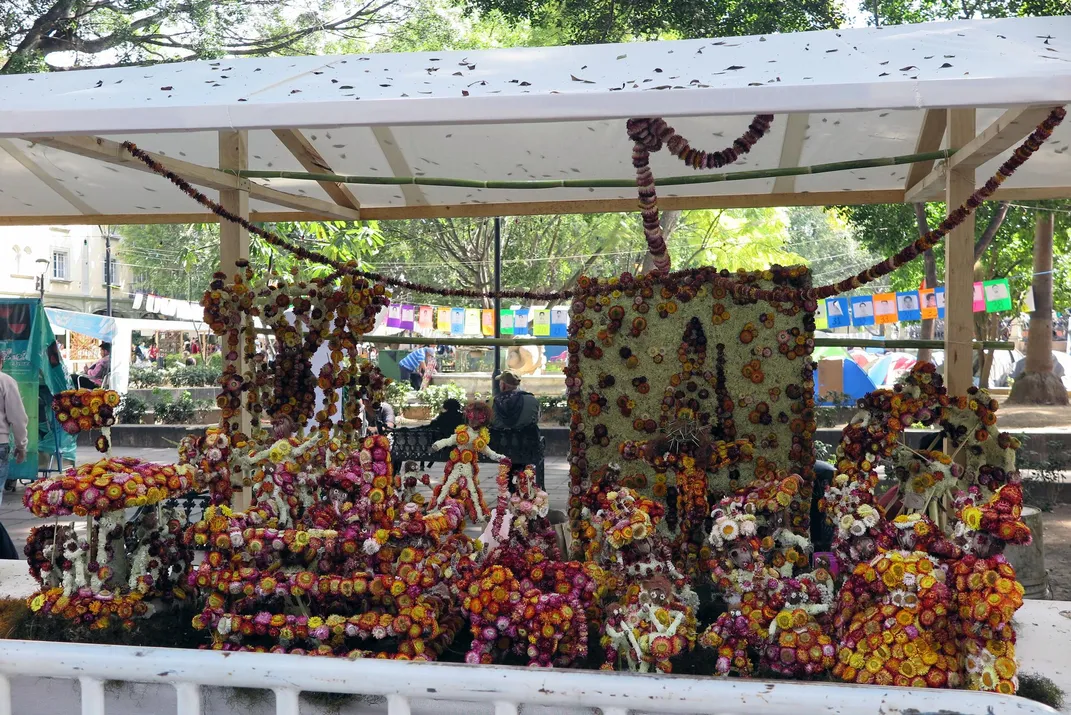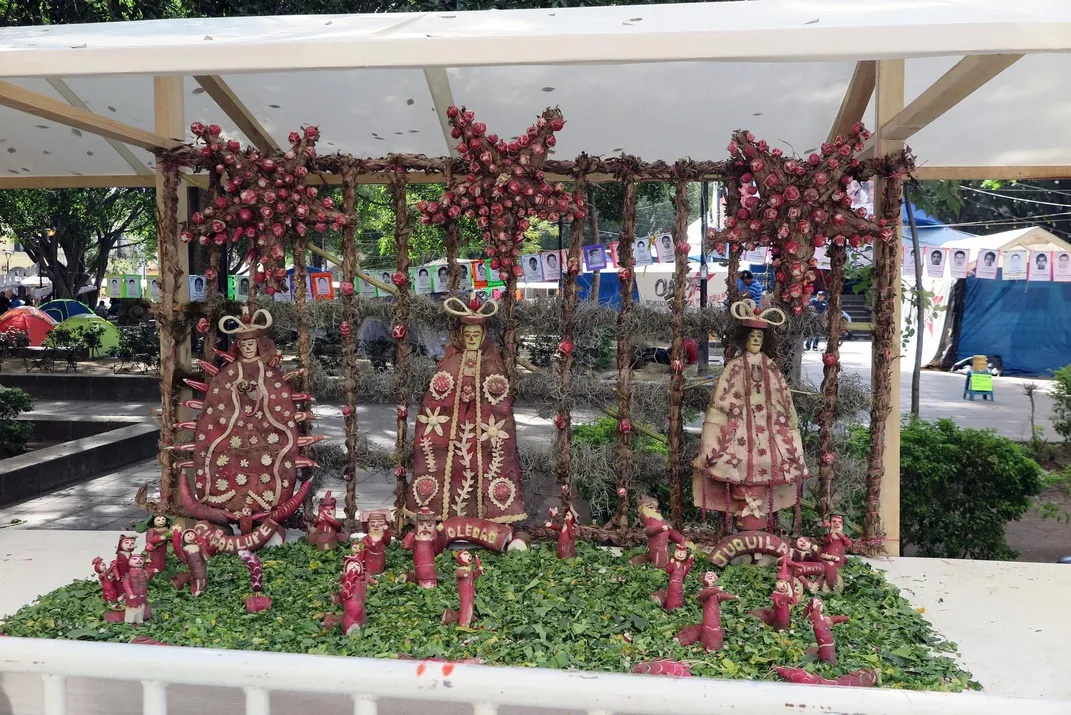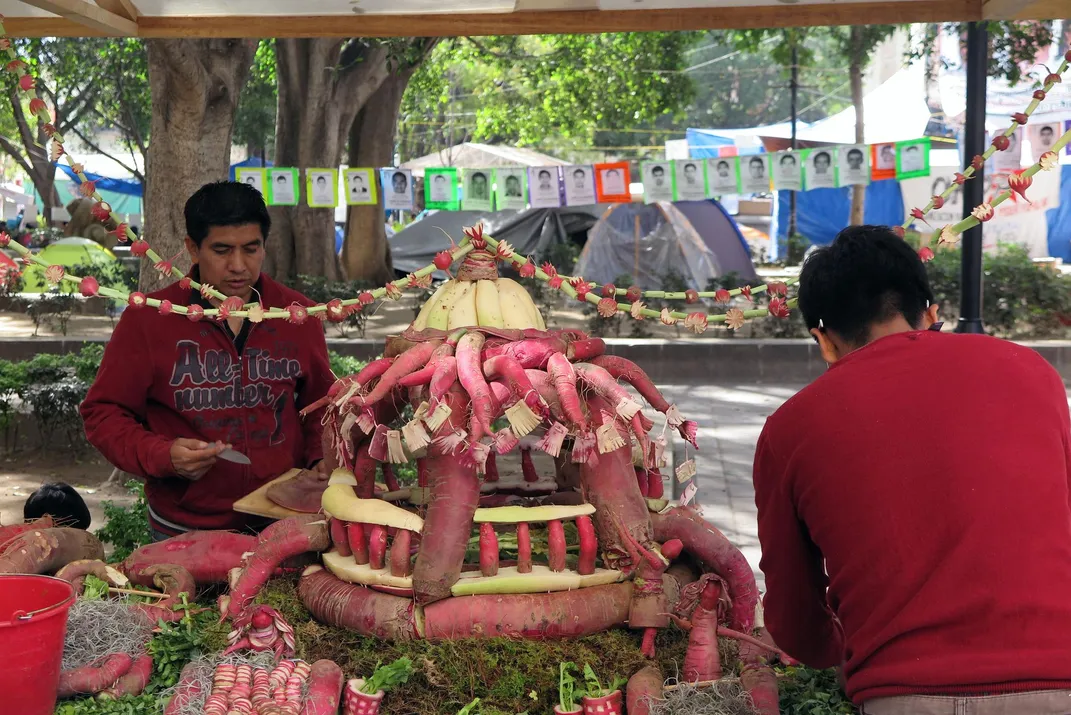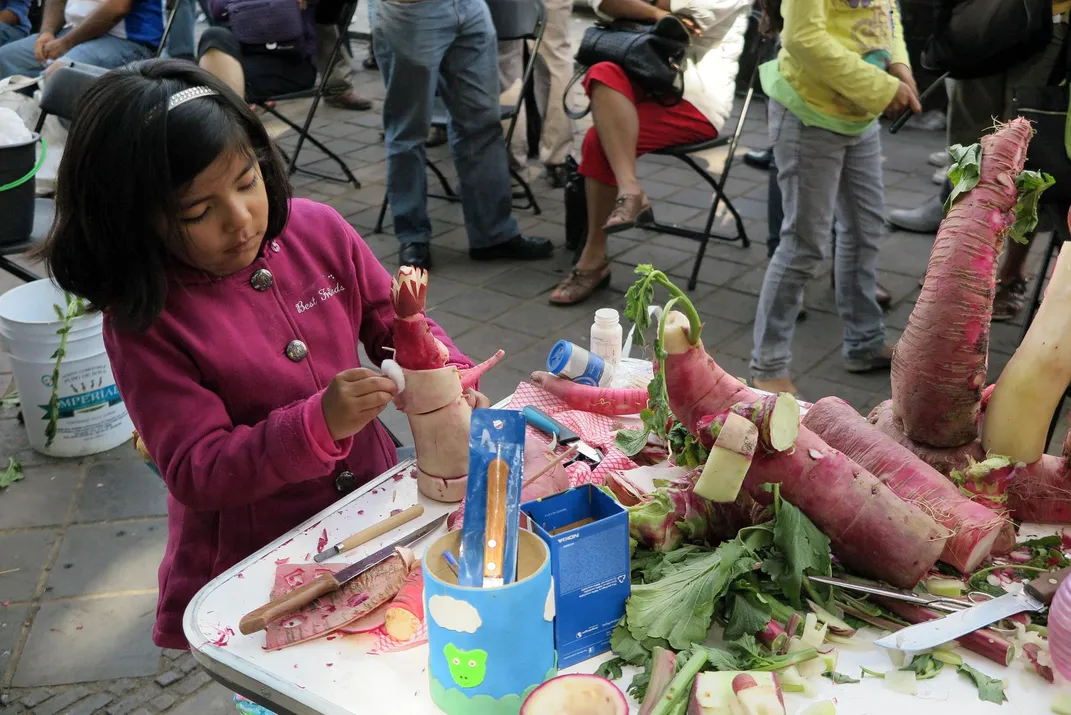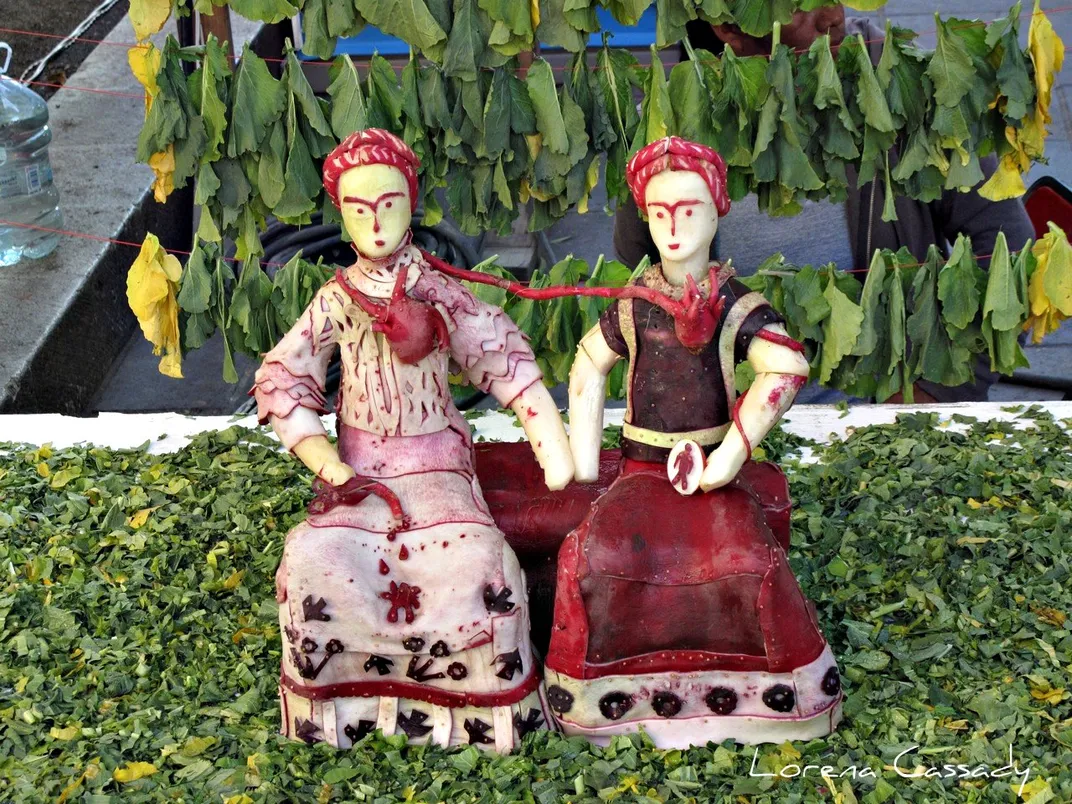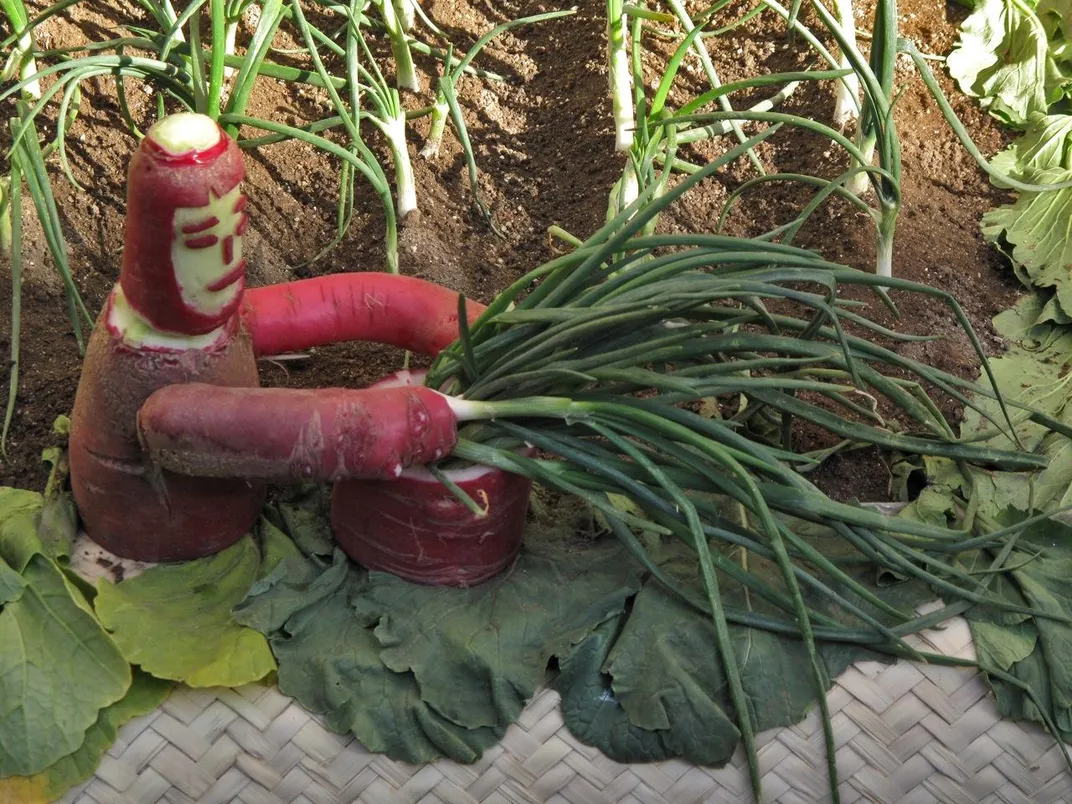Why Radish Carving Has Become a Popular Holiday Event in Oaxaca
On Dec. 23, hundreds of participants test their skills carving the ruby-skinned root during the Night of the Radishes
Each December 23, the bracing peppery fragrance of thousands of radishes fills the air at the zócalo in Oaxaca, Mexico, as competitors put final touches on their ruby-red masterpieces.
Called La Noche de Rábanos or Night of the Radishes, the annual event has been a local tradition for more than 120 years and began as a way for local farmers and peasants to showcase their produce to potential customers browsing the marketplace. To stand out from their competition, vendors began carving radishes, which are colossal in size compared to the garnishes accompanying tacos and topping beds of lettuce at restaurants here in the United States.
Noticing an opportunity, in 1897, Oaxaca’s then-municipal president, Francisco Vasconcelos, announced that a radish-carving competition would take place each December 23. The event was just peculiar enough to grab people’s attention and whet their appetites for something different during the holiday season.
Gabriel Sanchez, a local tour guide who grew up in Oaxaca, says that the competition has always been an important part of the local culture, and he often recommends it to visitors.
“It’s become very famous over the years,” Sanchez tells Smithsonian.com. “People will drive hundreds of [miles] to Oaxaca to experience it.”
While Sanchez admits that he has never wielded a carving knife as a competitor, he says that the competition grows in popularity with each passing year.
According to a CNN article on the topic, the local government in recent years has taken a more active role in the competition, securing a plot of land near the local airport to grow the radishes. During the growing months, new plantings are added every few weeks to give competitors a range of sizes to work with (and to prevent anyone from cheating). A few days before the event, competitors of all ages and skill levels can harvest their assigned plot. Most years, the total haul of the ruby-skinned roots weighs in at approximately ten tons, with some of the individual radishes swelling in size to more than 30 inches in length.
Once harvested, competitors get busy carving their lot into elaborate dioramas ranging from nativity scenes to dramatic moments in Mexican history. If selected by judges, the winning entry in each of two categories (“traditional,” which must embrace Oaxacan culture, and “free,” where anything goes) receives an award of about $1,500.
Planning Your Next Trip?
Explore great travel deals
Smithsonian magazine participates in affiliate link advertising programs. If you purchase an item through these links, we receive a commission.
